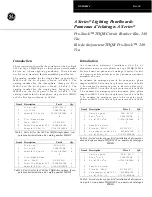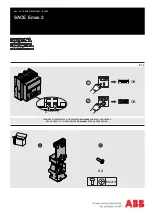
3-4
TOS9213S/ TOS9213AS
Matters to be Sure of After Turning-OFF Power
If you have to touch the DUT, test leadwires, probes, and/or output terminals and
their vicinities for re-connections or other reasons, be sure of the following two mat-
ters.
(a) The analog voltmeter indicates “zero.”
(b) The DANGER lamp has gone out.
Warnings for Remote Control
Be extremely careful when operating the tester in the remote control mode in which
the dangerous high test voltage is ON/OFF-controlled remotely. Provide protective
means as follows:
• Provide means to assure that the test setup does not become the
test voltage is being delivered by inadvertent operation.
• Provide means to assure that none can touch the DUT, test lead-
wires, probes, output terminals and their vicinities when the test
voltage is being delivered.
3.4
Warning for Residual High Voltages
•
In DC
w
ithstanding
v
oltage testing and ins
u
lation resistance testing, the
test lead
w
ire, test pro
b
e, and DUT are charged to a high
v
oltage. The
tester is eq
u
ipped
w
ith a discharge circ
u
it,
bu
t some time is nonetheless
req
u
ired to discharge them after the o
u
tp
u
t is c
u
t off. There is a danger of
electric shock d
u
ring discharge. To a
v
oid electric shock, take the
u
tmost
care to ens
u
re that the DUT, test lead
w
ire, pro
b
e, and highly charged parts
aro
u
nd the o
u
tp
u
t terminal are not to
u
ched. If it is necessary to to
u
ch
them,
b
e s
u
re to confirm
b
oth (a) and (
b
):
(a) The analog
v
oltmeter indicates “zero.”
(
b
) The DA
N
GER lamp has gone o
u
t.
•
As soon as the o
u
tp
u
t is c
u
t off, the tester’s discharge circ
u
it starts forced
discharging. Do not disconnect the DUT d
u
ring a test or prior to comple-
tion of discharging.
Discharge time
The length of the discharge time varies according to the properties of the DUT and
the test voltage.
Discharge is conducted at a resistance of approximately 500 k
Ω
in DC withstanding
voltage testing, and at 25 k
Ω
in insulation resistance testing.
WARNING
















































